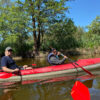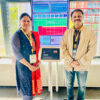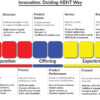
The esteemed scientific journal Nature has withdrawn a prominent paper that was published in March, which purported the discovery of a superconductor functional at room temperatures. This retraction marks the second paper related to superconductivity by Ranga P. Dias, a mechanical engineering and physics professor at the University of Rochester in New York, to be retracted within a year.
The phenomenon of retracting scientific articles has become a point of intense scrutiny and concern within the academic community. This issue not only impacts the integrity of the scientific record but also has far-reaching implications for the trust placed in scientific findings by the public and the scientific community itself.
The Growing Trend of Article Retractions
In recent times, there has been a notable increase in the retraction of scientific articles. This uptick is alarming, given the relatively stable number of retractions in the past. For example, the journal Infection and Immunity, in its 40-year history, has only had to retract 15 articles, six of which originated from a single laboratory. This is indicative of a larger trend observed across various scientific disciplines and journals.
The reasons for retractions are manifold, ranging from honest errors and nonreplicable findings to more serious instances of research misconduct, including data fabrication and plagiarism. Research misconduct, in particular, is categorized as the falsification or fabrication of data—manipulating materials, processes, or data to misrepresent results, or reporting experiments that were never performed.
The Pressure to Publish
The pressure to publish in high-impact journals is immense due to the benefits they confer—career advancement, grant funding, and peer recognition, to name a few. This pressure can sometimes lead to a “publish or perish” environment, where the value and worth of scientific research are disproportionately measured by publication metrics rather than the quality of the research itself. Consequently, this environment may foster risk-taking or even unethical practices among researchers desperate to publish their findings.
Correlation between Journal Impact and Retraction Index
A correlation has been observed between a journal’s retraction index and its impact factor. High-impact journals seem to have a higher probability of retractions. This could be due to several reasons. Firstly, the high stakes associated with publishing in prestigious journals may incentivize authors to engage in misconduct. Secondly, the desire for definitive findings could lead to data manipulation. Finally, high-impact publications are subject to more intense scrutiny, increasing the likelihood that any problems will be detected and lead to retraction.
Consequences of Retractions
The consequences of article retractions are significant. Erroneous or fraudulent research can mislead other scientists, leading them down unfruitive paths of investigation or even to incorrect conclusions that could influence clinical practices. Retractions due to misconduct can undermine confidence in the scientific literature and, by extension, in the scientists themselves. Furthermore, sensational claims that are later retracted can erode public trust in science, which can have a knock-on effect on funding and support for scientific research.
The Challenge of Detecting Misconduct
Peer review is the first line of defence against the publication of flawed research. However, even the most diligent reviewers cannot always detect instances of falsification or fabrication without access to raw data. This limitation underscores the challenges inherent in the current system of scientific publication and peer review.
Plagiarism and Cultural Perspectives
Plagiarism is another issue that complicates the retraction landscape. The internet has made it easier to commit and detect plagiarism, yet perceptions of plagiarism can vary culturally. Despite this, the scientific community widely agrees that plagiarism undermines the originality and integrity of scientific research.
Ethical Guidelines and Retraction Policies
In response to the issue of retractions, many journals have established formal retraction policies. For instance, the journals of the American Society for Microbiology provide detailed guidelines for ethical conduct and clearly define the grounds for retraction. These policies help differentiate between major errors that affect the conclusions of a paper and minor errors that can be corrected without retracting the article.
The Role of Retractions in Scientific Self-Correction
Despite the negative aspects, retractions play a critical role in the self-correcting nature of science. They signal a commitment to integrity and the correction of mistakes. The ongoing discussion and reflection on retractions within the scientific community are indicative of a desire to maintain and improve the reliability and trustworthiness of the scientific record.
Moving Forward
To address the problem of retractions, several measures can be taken. Firstly, there is a need for better education on research ethics and integrity. While formal ethics instruction is common, its effectiveness remains unclear, and continuous efforts to reinforce the importance of ethical conduct in research are necessary. Secondly, transparent and robust peer-review processes are essential, potentially supplemented by technological solutions that can assist in the detection of data manipulation and plagiarism.
Furthermore, the scientific community must continue to refine and enforce guidelines for ethical conduct and retraction policies, ensuring they are clear, fair, and uniformly applied. Finally, institutions and funding agencies need to recognize the pressure that the current “publish or perish” model places on researchers and work towards creating an environment that values the quality of research over mere publication metrics.
Conclusion
The increasing rate of scientific article retractions is a complex issue that reflects broader systemic problems within the scientific enterprise. While retractions are vital for correcting the scientific record, they also highlight the need for a more nuanced approach to evaluating scientific success and the importance of fostering an environment that prioritizes integrity over impact. As the community grapples with these challenges, the ultimate goal remains clear: to ensure that the scientific endeavour continues to be a trustworthy and self-correcting pillar of human knowledge and progress.
Prof. Dr. Prahlada N. B
10 Nov 2023
Chitradurga.

















Prahlada Sir 💐
As rightly pointed by you….
‘Scientific Integrity’ , implies adhering to ethical principles in Research work.
‘Retraction’ is removing an article from the scientific record…at any point of time after it’s publication.
A standard research article to get published in a reputed journal….should have transparent & reproducible data, without fabrication of data or plagiarism; the article ideally , before publication should be scrutinised & reviewed by an experienced mentor or expert in the field of study…clearing all ethical dilemmas & removing honest errors.
The ultimate aim of any research study, should be to benefit mankind.
As you have rightly said Prahlada Sir,
‘ Whenever a research article is retracted , in a reputed journal, many eyebrows are raised , especially if the article is a sensational one !’
Also, if retractions occur frequently…..public trust in research work gets eroded & funding for same becomes difficult to get.
On the positive side…..
ReplyRetractions help in rectifying research content & making the journal more trustworthy & reliable.
So, an environment of credibility & integrity should always be there in research field ..by maintaining honesty,objectivity, transparency, creativity & accountability 👌🏿👍 🧐.